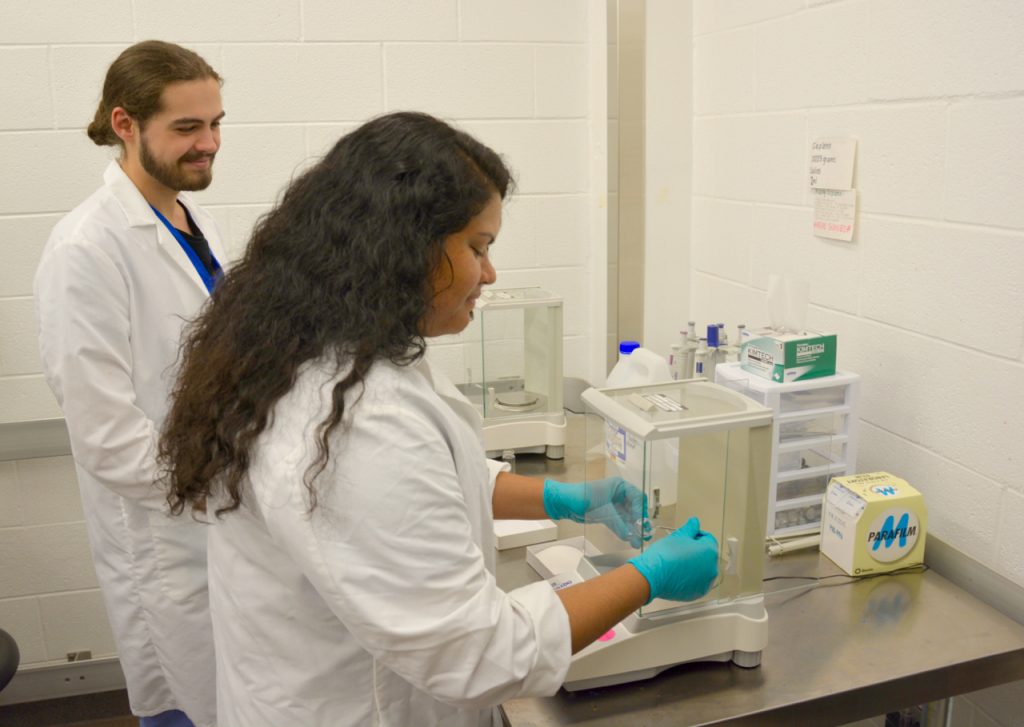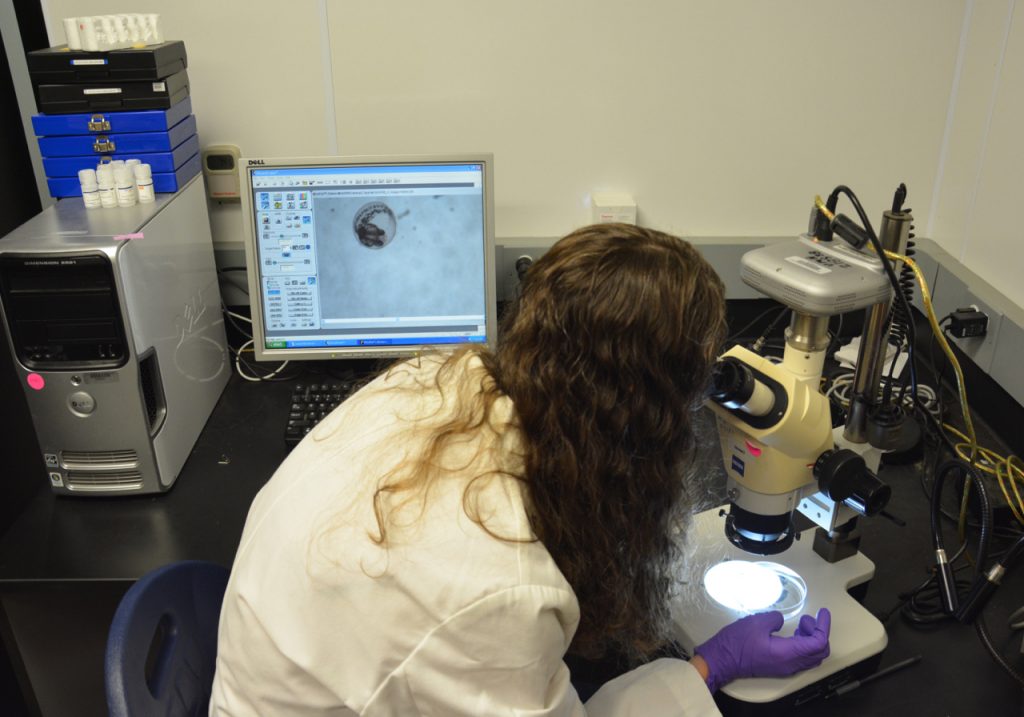Neuropharmacology Core
The Neuropharmacology Core enables investigators to use in vitro and in vivo assays to serve as a guide in the isolation and identification of biological-active natural products and to evaluate compounds predicted to have activities in these systems through rational drug design. The Core uses human neuroblastoma cell lines for assessment of neurotoxicity and neuroprotection in response to drug treatment.
The in vivo component of the Neuropharmacology Core currently provides the resources and technical support necessary for drug administration in animal models and analysis of many aspects of animal behavior in response to treatment. Zebrafish assays of developmental toxicity and anti-epileptic effects of drugs are available, and include both genetic and pharmacological induced seizures. Our rodent models (mice and rats) include assays of abuse potential, cannabinoid function (temperature, locomotion, pain, and catalepsy), ataxia, anti-nociception, anxiolytic, anti-depressant, allodynia, and post-traumatic stress effects. Additionally, learning and memory as well as muscle strength can be assessed in both mice and rats. Together, we can develop protocols to best suit the needs of investigators when administering novel compounds to our various animal assays.




